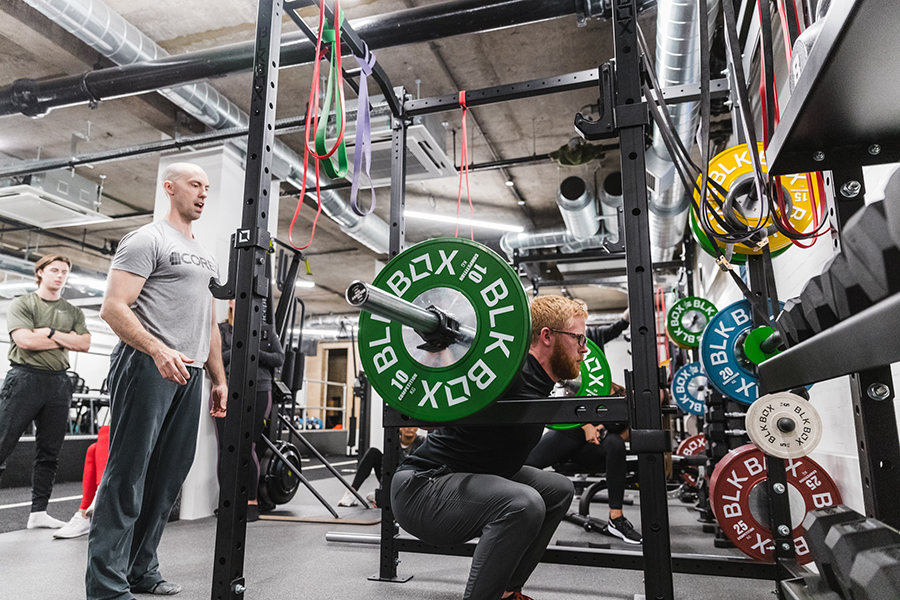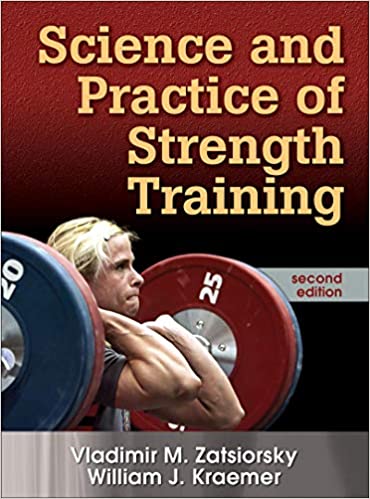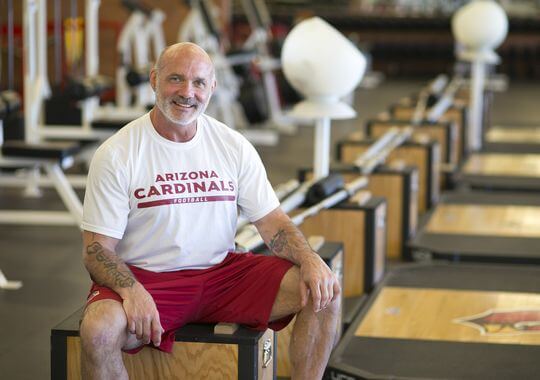I tend to avoid certain things at all costs:
- Making eye contact with my cat.
- Pineapple upside down cake (don’t ask).
- Uttering the phrase “looks like someone has a case of the Mondays.”
- Cocaine
- Partaking in social media drama, buffoonery, and general hijinks.
For me there’s a cost/benefit to all of the above. Take my cat, Dagny, for example. I love her to pieces. But I still get the feeling, whenever she looks at me for more than three seconds, she’d murder me in a nanosecond with a machete if only she had opposable thumbs.
I have my reasons for the other stuff too.
With regards to the latter, however, I was recently lured in like a moth to a flame when I saw a Tweet from a well regarded and highly respected fitness professional commenting on “lifting heavy” and playing sports…
…and how people should avoid the former if participating in the latter.

What in the What?!?!
In the name of full transparency here’s the actual Tweet:
Unpopular fitness opinion
If you play sports on a regular basis you shouldn’t be heavy squatting or deadlifting.
— Dan Go (@FitFounder) May 11, 2021
I have to say, before I dive into my own thoughts on Dan’s thoughts, reading the subsequent comments was quite entertaining.
They ranged from people agreeing to the statement1 to what can only be described as a few peacocks spreading their feathers.
I.e., Triggered!
A few coaches read the comment and reacted as if someone informed them creatine was the same as steroids or, I don’t know, one of their athletes didn’t squat to depth.

I could just smell the inflated lat syndrome emanating from my screen.
Admittedly, I too rolled my eyes a bit.
That said, I felt the initial statement was a bit too ambiguous. To me, it was more about garnering eyeballs & drawing attention to his funnel link than providing anything of real substance.2
- What sports are we referring to? MMA? Lacrosse? Backyard wiffleball?
- What level of sports are we referring to?
- What’s the ability level & experience level of the athletes in question as it relates to the weight-room?
- What’s considered “heavy.”
- Is there no such thing as in-season and off-season training modifications in this mysterious world where athletes shouldn’t lift heavy things?
To Dan’s credit, he did elaborate further:
“The reason is because both are taxing to the nervous system. Mind you when I talk “sport” I mean one played at a high intensity (ie. basketball, soccer, surfing). Trying to play your best while chasing PR’s will likely cause injury.”
I didn’t quite understand where he was going with his sport examples. I’d make the argument that any athlete of any sport – particularly if it’s being performed at a high level – needs to be prepared for that sport. I don’t care if we’re talking about soccer or bowling.
Okay, maybe bowling is a stretch…;o)
Much of that preparedness comes from a well-rounded, properly progressed IN-SEASON and OFF-SEASON strength & conditioning program.

Off-Season Training = Initially focuses on recovery to combat a long competitive season as well as to address any deficits/weaknesses that accumulated along the way. That then transitions to a more traditional strength & conditioning program catered to helping the athlete improve strength, speed, movement capacity, ROM, ability to run through a brick wall, etc.
In-Season Training = Reducing training frequency/volume – depending on playing time (starter vs. 10th-11th man off the bench in basketball), position (everyday player vs. pitcher in baseball), game schedule (football vs. softball) – albeit under the guise that the objective is to LIMIT as much drop off as possible of the gains made in strength, speed, etc during the off-season.
Not to mention, in-season strength training is a splendid way to help reduce the incidence of injury as a season progresses and fatigue and wear-n-tear on the body accumulates.
KEY POINT: Reduction in frequency (volume), not intensity.
It’s my experience – and that of many other coaches – that intensity (as a percentage of one’s 1-rep max) is far less taxing on the CNS than volume (sets x reps x frequency). In fact, it behooves most athletes to keep intensity somewhat high during SOME of their in-season training.
As Vladimir Zatsiorsky states in his seminal book, Science and Practice of Strength Training:
“Training with weights ~90% of one’s 1-rep max (I.e., heavy, but no anywhere near PR heavy):
-
Recruits the maximum number of motor units.
-
Ensures the fastest MU’s are activated.
-
Discharge frequency (rate coding) is increased.
-
Activity is synchronous.
-
Improves coordination between synergistic muscles.
-
Increases potential for future hypertrophy gains.”

Moreover, Zatsiorsky notes that from a velocity standpoint, it’s been shown that power output increases as the weight lifted decreases from 100% of 1RM to 90% of 1RM. In fact, for the back squat and deadlift, power output for a load at 90% 1RM may be twice as high as the 1RM load due to the large decrease in the time required to complete the exercise with the lighter load.
In other words: Lifting light(er) loads faster = best of both worlds?
Additionally, strength “lingers.”
You don’t have to do a lot of it in order to maintain it.
In his book, Block Periodization, Dr. Issurin notes that maximal strength has a “residual duration” of 30 +/- 5 days.
In non-Klingon all this means is that, in order to maintain strength, you only really need to remind the body every 2-3 weeks (or so) of what it takes to keep it. This is splendid news for in-season athletes.
This means that 2-3 heavy(ish) sets of 2-5 reps (in the 85-95% range) every few weeks is enough to maintain most of their strength levels.
Australian strength coach, Nathan Kiely, sums things up nicely:
“Maintaining neuromuscular strength in-season is critical. And a load that wouldn’t have developed it in the first place, won’t do enough to retain it either.”
To that end, NO COMPETENT COACH is chasing PR’s in-season. I just wish Dan would have said THAT initially instead of the blanket statement of “if you play sports you shouldn’t lift heavy.”
Because, I agree – it makes zero sense to max out or chase PR’s during a competitive season.
As one commenter commented:
“Chasing PRs and 1 RM in season are pointless. But if you program correctly and tailor workouts to your athletes sport intensity, schedule and allow recovery time. PRs are just going to happen organically.”
The statement reminded me of something I heard renowned strength & conditioning coach, Buddy Morris, say during a presentation years ago:
“
Tony, can we be BFFs?Whenever an athlete of mine hits a PR – especially in-season – I shut em down for the day.”

Word.
In Short: When dosed intelligently you can do both.
Play sports AND lift heavy.


